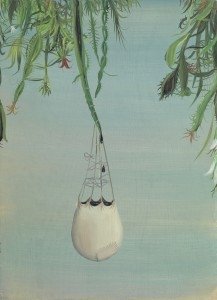Three exhibitions
dal 17/9/2009 al 3/10/2009
Segnalato da
17/9/2009
Three exhibitions
Kunstlerhaus Bethanien (old venues), Berlin
Stephan Kaluza - Tomasz Kowalski - Romeo Gongora

Stephan Kaluza
Das Mauerprojekt - complexe 16
Since its fall in 1989, the Berlin Wall has been dismantled systematically, apart from a few negligible remains. An international symbol of division, the ‘Wall’ as such has disappeared – today it exists only in people’s me- mories. Stephan Kaluza walked the full 50 km of this more or less immaterial site of remembrance, along the former border, and took a photo of the (invisible) Wall at regular intervals of one metre. In order to counter forgetfulness and take hold of a history that continues to make an impact even today, he assembled one single image from approximately 30,000 separate photos. The past and the visible present come together in this ‘absolute long shot’ to form a timeless kaleidoscope of world history and its changes. Kaluza’s “illusion of instantaneous exposure” succeeds in elucidating the incomprehensible phenomenon of the ‘Wall’ or “remini-scences” of what it was like.
Simultaneously to "Das Mauerprojekt - complexe 16", the Gallery Michael Schultz Berlin is showing "bildstücke" by Stephan Kaluza (3rd September – 10th October 2009): on different theatre stages – stage-cages –, the viewer is confronted by the individual fates of various protagonists whose innermost souls are turned outwards, inexorably exposed to the visitor’s gaze. Together, the two exhibitions offer a comprehensive insight into the artistic work of photographer Stephan Kaluza.
.............................................
Tomasz Kowalski
Tomasz Kowalski’s paintings and installations fascinate the viewer with their highly imaginative details, from which the artist creates strange scenes and scurrilous stories. Kowalski’s pictorial worlds make extensive use of the iconographic repertoire of art history, combining echoes of Brueghel and Bosch, still-life works by the Flemish masters, or naïve painting as recognisable citations to create new, apparently surreal landscapes and interiors. Tomasz Kowalski is not searching for something completely new; his focus of interest is the changing way in which we see past trends and art movements. The muted, rather dark colours that Kowalski prefers to use, or the cobweb-like structures repeatedly found in his works, point to the deep and incomprehensible dimension of time, which is given precedence over space in his work as a painter. In the latest works, Kowalski groups together key themes and motifs from past paintings to create a new form resembling installation, presenting organic parallel-worlds. "gniazdo" consists of a complex installation with wax figures dressed in dark clothing in a kind of stage set with strange props, which seems as if one of the artist’s dreams has taken shape in a theatre scene. It is no coincidence, therefore, that Kowalski’s ‘stage’ is reminiscent of Tadeusz Kantor’s absurd, unreal scenography.
In 2009, Tomasz Kowalski received the Eastern Europe Fellowship in the Fine Arts from the Ernst Schering Foundation, Berlin, which includes a twelve months residence and a presentation of work at Künstlerhaus Bethanien.
.......................................
Romeo Gongora
Volkskunst halle / People's Art Space
Romeo Gongora works on his installations, actions and performances in the environment in which he is currently living, collaborating with members of different social groups. Continual dialogue with those involved is characteristic of his cooperative working method; the participants collaborate until the final ‘product’ is complete, exercising a decisive influence on the outcome. (http://www.romeogongora.com)
Romeo Gongora’s most recent work, "Volkskunst halle / People´s Art Space", consists of two installations which change over the course of the exhibition period and a series of individual “demonstrations” (Romeo Gongora). They take place in the exhibition space, bringing together people who struggle for their personal freedom in various ways. Each demonstration leaves behind some material evidence in the exhibition, which develops into documentation of what has happened and modifies the exhibition over the course of time. "Volkskunsthalle / People's Art Space" looks to examine the interrelations of suppression and dominance upon which a society and its morality are based; the production strategy employed includes improvisation, the unexpected and the non-existence of any ‘screenplay’. "Volkskunsthalle /People's Art Space" was conceived during Gongora’s one-year stay at Künstlerhaus Bethanien and investigates or reacts to processes of transition and renewal in cities and societies, which the artist has spotted in the surrounding Kreuzberg area as well.
Romeo Gongora holds a fellowship from the Canada Council for the Arts, Ottawa, and the Embassy of Canada, Berlin in the context of Künstlerhaus Bethanien’s International Studio Programme.
Opening: Thursday, 17th September 2009, as from 7 pm
Kunstlerhaus Bethanien
Mariannenplatz 2, Berlin
Wednesday - Sunday 2-7 PM
free admission



